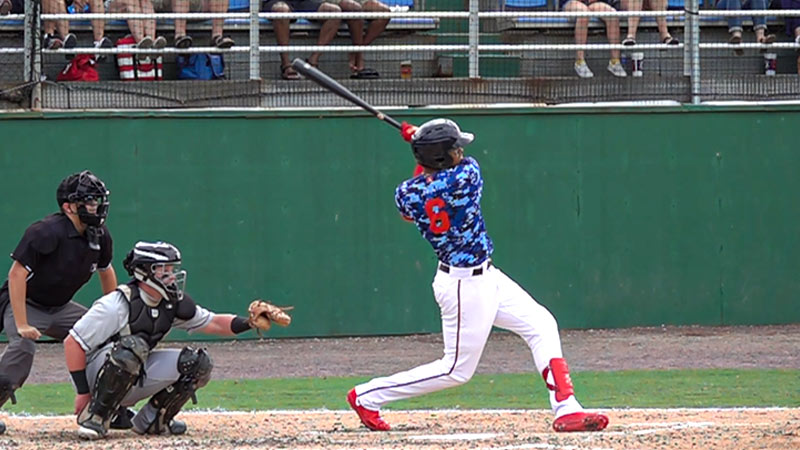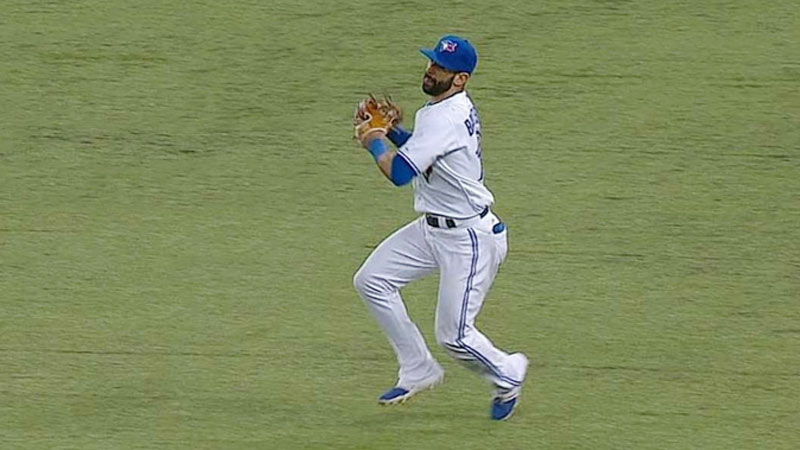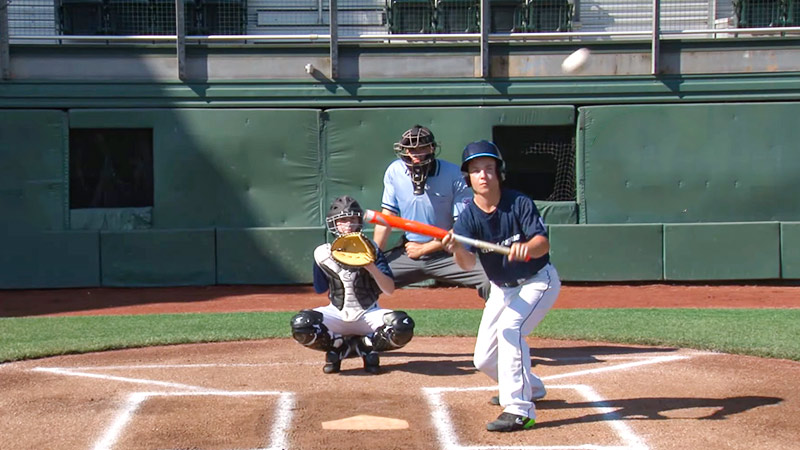In the game of baseball, foul balls play a significant role in shaping the dynamics of the sport. These balls, which land outside the boundaries of fair play, have specific rules and consequences associated with them.
For sure, understanding the concept of foul balls enhances our appreciation of the game and the experiences it offers. But many of us don’t actually know how this foul ball concept work in Baseball.
Well, if you are one of them, this blog is for you. Here, you will find all the details about the concept of a foul ball.
Definition and Characteristics of a Foul Ball
In baseball, a foul ball is a term used to describe a batted ball that lands outside the field of play, typically outside the foul lines that define fair territory. When a batter hits a foul ball, it is considered a strike, unless the batter already has two strikes. If the batter hits a foul ball with two strikes, it does not count as a strikeout and the at-bat continues.
A Batted Ball That Lands Outside the Foul Lines
A foul ball is defined as a ball that is hit by the batter and lands outside the designated foul lines. These foul lines extend from home plate to first and third base, creating the boundaries of fair and foul territory.
When a batted ball crosses these lines and lands outside them, it is considered a foul ball.
The Role of the Foul Lines and Foul Poles
The foul lines in baseball are crucial for determining whether a ball is fair or foul. These lines start at their intersection with home plate and extend all the way to the outfield fence, marking the boundary between fair and foul territory.
Additionally, some ballparks have foul poles installed, typically along the outfield fence, to aid in determining whether a fly ball is fair or foul.
If a batted ball hits the foul pole or lands beyond it, it is considered a fair ball.
Different Scenarios of Foul Balls
Settling on Foul Territory Between Home and First or Third Base
When a batted ball first touches the ground and settles in foul territory between home plate and either first or third base, it is considered a foul ball.
The location of the ball’s initial contact with the ground determines its classification as foul.
Bouncing or Rolling Into Foul Territory Before Passing the First or Third Base
If a batted ball bounces or rolls into foul territory before passing first or third base, it is still considered a foul ball. Even if the ball subsequently passes over any part of the base, as long as it initially landed in foul territory, it remains foul.
The First Bounce Occurs in Foul Territory Beyond First or Third Base
In some cases, a batted ball may pass over first or third base in fair territory but then land in foul territory. In this scenario, the ball is still considered fair since it passed over the base first, but it becomes foul due to its final landing position in foul territory.
Contacting an Umpire, Player, or Foreign Object in Foul Territory
If a batted ball touches an umpire, a player, or any foreign object (such as a railing or net) in foul territory before settling, it is considered a foul ball.
The contact with these objects or individuals nullifies the ball’s potential to be in play.
Foul Fly Balls and the Role of the Foul Pole
When a batted ball is hit in the air and crosses the foul line, it is considered a foul fly ball. The determination of whether the ball is fair or foul is based on the relative position of the ball and the foul line, including the presence of a foul pole.
If the ball hits the foul pole or crosses the foul line beyond first or third base, it is ruled fair and may result in a home run.
Understanding these various scenarios of foul balls is essential for players, umpires, and fans to accurately interpret the game’s outcome and make appropriate calls on the field. In the next section, we will explore why foul balls are referred to as such and delve into the historical and etymological origins of the term.
Why is It Called a Foul Ball?

The term “foul ball” has its roots in the early history of baseball. The exact origin is not well-documented, but it is believed to have emerged in the mid-19th century as the game of baseball was evolving.
As the rules of the game were being established and refined, the concept of fair and foul territory became an integral part of gameplay. The term “foul ball” likely emerged as a way to describe a ball that went outside the boundaries of fair play.
Etymological Reasons for Using the Term “Foul”
The use of the word “foul” in describing a ball that goes outside the designated boundaries of fair play has several etymological reasons. The term “foul” is derived from Middle English and Old English words that mean “stinking” or “putrid.” Over time, the term expanded its meaning to include anything that is considered offensive or contrary to the accepted standards.
In the context of baseball, a ball that goes outside the boundaries of fair play is seen as deviating from the accepted rules and standards of the game.
It is considered “foul” because it is not within the prescribed parameters of fair play and does not contribute to the natural flow of the game.
Ball Going Outside the Boundaries of Fair Play and Foul
The term “foul” in baseball aptly describes a ball that goes outside the boundaries of fair play. When a batted ball lands outside the foul lines, it is seen as deviating from the intended path and trajectory of a fair ball.
It disrupts the normal course of play and requires specific rules and considerations.
The use of the term “foul” emphasizes that the ball has strayed from the accepted norms of the game. It signifies that the ball is not in play and does not contribute to the progression of the game unless certain conditions, such as being caught in the air, come into play.
Ultimately, the term “foul ball” highlights the importance of maintaining the integrity of fair play and upholding the rules and boundaries of the game.
It serves as a reminder that a ball outside the established limits is considered “foul” and must be treated accordingly.
Rules and Consequences of Foul Balls
When a batter hits a foul ball, it has specific implications for the current at-bat. Understanding these consequences is crucial for players and fans alike.
Counting a Foul Ball as a Strike
In most cases, a foul ball is counted as a strike against the batter. If a batter hits a foul ball with less than two strikes, it adds to the strike count.
For example, if the batter has one strike and hits a foul ball, it will have two strikes. This rule ensures that batters who repeatedly hit foul balls are penalized and potentially at risk of striking out.
Nullifying a Pitch if a Foul Ball Occurs With Two Strikes
However, there is an exception to counting a foul ball as a strike. If a batter hits a foul ball with two strikes, the foul ball nullifies the pitch.
In other words, the pitch is disregarded, and the at-bat continues. This rule gives batters some leniency when they are in a two-strike count and helps to extend their opportunity to make contact with the ball.
Foul Balls and the Outfield Boundaries

Foul balls also have implications for the outfield boundaries and can affect the outcome of a play.
Out-of-play Foul Balls and Ground Rule Doubles
When a foul ball goes out of play, meaning it leaves the field of play entirely, it is considered a dead ball. In such cases, the umpire will signal the ball as being out of play, and the batter is awarded a ground rule double.
A ground rule double means that the batter is automatically awarded second base, and any runners on base are allowed to advance two bases as well. This rule prevents potential discrepancies or confusion when a ball goes out of play.
Caught Foul Balls and the Potential for Outs
If a fielder catches a foul ball before it touches the ground or any object outside the field, it results in an out. This applies regardless of the number of outs or the count on the batter.
The caught foul ball is considered the same as any other fly ball that is caught for an out. This rule rewards fielders who can make skillful catches and adds an additional dimension to the defensive aspect of the game.
Foul Balls in Determining Fair or Foul Territory
Foul balls also play a vital role in determining fair or foul territory on the field.
Foul balls that are hit along the first or third base lines are instrumental in defining the boundaries of fair play. If a ball is hit over these lines in foul territory, it is ruled foul.
However, if the ball is hit in the air and lands in fair territory before reaching the first or third base, it is a fair ball. The position of the ball when it crosses these lines determines whether it is in play or foul.
Understanding these rules and consequences associated with foul balls is crucial for players, umpires, and fans to accurately interpret the game and make informed judgments on the field.
In the next section, we will explore the experience of catching a foul ball and the traditions and etiquette associated with it.
The Experience of Catching a Foul Ball
Catching a foul ball is a thrilling and memorable experience for fans attending a baseball game. The anticipation of a ball coming your way and the excitement of potentially making a catch add to the overall atmosphere of the game.
Fans eagerly watch each pitch, hoping for the opportunity to catch a foul ball and create a lasting memento of their baseball experience.
Traditions Surrounding Catching and Keeping Foul Balls
The act of catching a foul ball carries with it certain etiquette and traditions that are followed by fans and players alike. These customs help maintain a respectful and enjoyable environment for everyone involved.
One tradition is that fans who catch a foul ball are often applauded and celebrated by those around them. It is seen as an achievement and a lucky occurrence.
Some fans may even receive recognition from the team or be featured on the stadium’s video screens.
Additionally, there is an unwritten rule that fans who catch a foul ball should be willing to share the excitement with those around them, especially children.
Many fans willingly give the ball to a nearby child, creating a memorable experience for the young fan and further adding to the joy of the moment.
Deciding Whether to Keep or Give Away a Foul Ball
When fans catch a foul ball, they face the decision of whether to keep the ball for themselves or give it away. Several factors come into play when making this decision.
Firstly, the significance of the ball itself plays a role. If the foul ball is hit by a favorite player or has historical significance, fans may be more inclined to keep it as a personal keepsake.
Secondly, the age of the fan plays a part. Many fans prioritize giving the ball to a child, recognizing that the experience of catching a foul ball is magical and memorable for young fans.
This gesture can inspire a lifelong love for the game and create a positive connection to baseball.
Thirdly, the proximity of the fan to the child also influences the decision. Fans who catch a foul ball further away from a child may feel less obligated to give it away, whereas those in close proximity often feel compelled to share the joy with a young fan.
Ultimately, the decision of whether to keep or give away a foul ball is a personal one. Fans weigh these factors and make a choice that aligns with their own values and desires.
In the final section, we will summarize the key points discussed and emphasize the importance of foul balls in the game of baseball.
Comparison of Fair and Foul Balls in Baseball
| Aspect | Fair Ball | Foul Ball |
| Definition | A batted ball that lands within the boundaries of fair play | A batted ball that lands outside the boundaries of fair play |
| Effect on the count | Adds to the strike count (except with two strikes) | Nullifies the pitch (with two strikes) |
| Out-of-play consequences | In the play, can be fielded for outs or result in hits | Dead ball, no play can be made on the ball |
| Fielder’s role | Attempt to field the ball for outs or prevent runners | Catch the ball for an out or allow it to fall foul |
| Outfield boundaries | Can land within the foul lines before first or third base | Can go out of play, resulting in ground-rule double |
| Fan experience | Creates excitement and anticipation | Potential for fans to catch and keep or give away the ball |
FAQs
Can a foul ball ever be ruled fair?
Yes, there are instances where a foul ball can be ruled as fair. If a batted ball initially lands in foul territory but then rolls or bounces back into fair territory before passing first or third base, it is considered a fair ball.
The crucial factor is the position of the ball when it crosses the first or third base lines.
Is a foul ball considered an out?
No, a foul ball is not considered an out unless it is caught by a fielder before it touches the ground or any object outside the field of play. If a fielder catches a foul ball in this manner, it results in an out regardless of the count or number of outs.
Can a foul ball that goes over the outfield fence be a home run?
No, a foul ball that goes over the outfield fence is not considered a home run. In order for a batted ball to be a home run, it must remain within fair territory while passing over the outfield fence.
A foul ball that clears the outfield fence is generally ruled as a foul ball and not a home run.
Can a foul ball hit by a batter hit the batter?
Yes, a foul ball can hit the batter. If the ball strikes the batter while they are within the batter’s box, regardless of whether it is in fair or foul territory, it is considered a foul ball.
The contact with the batter does not change the ruling of the ball.
Are there any penalties for touching a foul ball as a spectator?
In general, there are no penalties for touching a foul ball as a spectator. Spectators are often encouraged to try to catch foul balls for a chance to keep them as souvenirs.
However, it is important to note that interfering with a live ball in play, such as reaching onto the field or hindering a player’s attempt to make a play, can result in interference penalties and potential ejection from the stadium.
It is essential to follow stadium rules and guidelines when attempting to catch a foul ball.
Conclusion
A foul ball in baseball is a batted ball that lands outside the boundaries of fair play. It carries specific rules and consequences, including its impact on the current at-bat and the role it plays in determining fair or foul territory.
Catching a foul ball adds excitement to the game, and fans navigate traditions and considerations when deciding whether to keep or give away the ball.
Foul balls are an integral part of the baseball experience, creating memorable moments for both players and fans alike.
However, it’s time to leave. Thank you for your patience.







